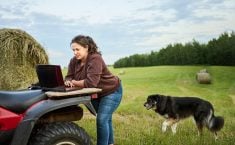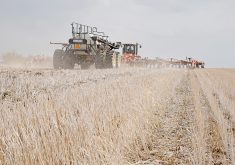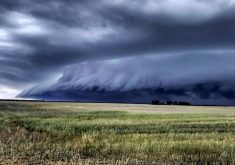There are three types of farming operations: full-time, part-time and hobby.
Which category does your operation fit into?
Each of these classes have different rules regarding deductions and losses that can be claimed against farming income and other income. It is important to understand what your farming activity is classified as to make the most of the tax rules available.
Here are outlines for the three types of farm operations and the rules around deductions and losses.
Full-time
Read Also

Kochia has become a significant problem for Prairie farmers
As you travel through southern Saskatchewan and Alberta, particularly in areas challenged by dry growing conditions, the magnitude of the kochia problem is easy to see.
For farming operations to be considered as full-time, the owner must receive his chief source of income from the operation. For example, a grain farmer who also works as a part-time substitute teacher may be classified as a full-time farmer. He will fall into this category if he makes most of his income through the farm operation and is not reliant on the substitute teaching position.
As a full-time farmer, you can claim the full amount of any farm expenses to lower the taxable income you earned. Another benefit of running a full-time farm operation is that farm losses can be claimed against all sources of income.
This means that if a farm loss is incurred, it can be claimed against farming income of other years and also against employment income, such as income earned as a substitute teacher. These losses can be carried back three years or forward for 20 years to reduce taxable income of those years.
Part-time
There are two main criteria that classify a farm operation as part-time. There must be a reasonable expectation of profit and the farming operation does not provide the owner with their chief source of income.
For example, if an individual earned his main source of income as a full-time teacher and ran a farm operation for additional income, the farm would be considered part-time.
Similar to full-time farmers, part-time farmers can claim farming expenses, but there is a limit of $17,500 of losses that you can apply against other income or other years.
This $17,500 is calculated as the first $2,500 in losses plus half of the next $30,000 of farm losses. Since there are many restrictions on how and what losses part-time farmers can use, they are called “restricted farm losses.” The same rules that apply to full-time farms regarding the time frame of when losses can be carried back or forward also apply to part-time farms. However, in this case, the losses can only be claimed against farming income, not other income, such as the income earned through teaching in the example above.
Hobby
The main factor in differentiating a hobby farm from a full- or part-time farm is that a hobby farm is run for personal reasons and is not expected to earn a profit.
An example of a hobby farm would be a doctor who owns horses for his own personal use with no expectation of profit.
For hobby farms, farming expenses can be claimed to bring farming income to zero, but if there are losses they cannot be applied against any other income. In the example of the doctor and his horses, the hobby farmer cannot apply losses from the horses against his income from his professional practice.
As you see, rules regarding how you may classify your farming operation can be complex, which means it is beneficial to discuss it with your trusted tax adviser.
This ensures that you avoid penalties for misclassifying farming income and allows you to benefit from the deductions, losses and other breaks from taxes on your farming operation.
Colin Miller is a chartered accountant and partner with KPMG’s tax practice in Lethbridge. Contact: colinmiller@kpmg.ca. He would like to thank Marden Litchfield and Amanda Friesen of KPMG for their assistance with writing this article.

















